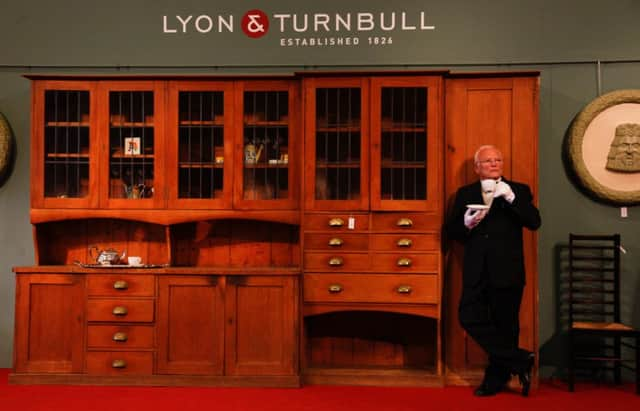Charles Rennie Mackintosh fitted kitchen for sale


In what is believed to be a world first, a selection of kitchen units designed by the celebrated architect and designer is set to go up for auction next month with an estimated price for the collection of £20,000. Lyon & Turnbull, the Edinburgh auction house, will be auctioning off three lots which previously made up the kitchen of The Moss, a house designed by the architect and built in Drumgoyne, near Killearn.
The three lots which make up the kitchen include a small pine kitchen dresser valued at £400 to £600, a large pine kitchen dresser valued at £3,000 to £4,000 and a substantial range of kitchen cupboards and work tops whose estimated value is between £3,000 and £5,000. The kitchen collection will be sold on 29 November at Lyon & Turnbull’s Decorative Arts Sale in Edinburgh.
Advertisement
Hide AdCharles Rennie Mackintosh famously believed no detail was too trivial to be beyond the eye of a true architect and on one occasion even specified what colour of cut flowers was permitted on the living room table so as not to clash with the rest of the decor.
The kitchen he designed for Sir Archibald Campbell Lawrie, who died in 1914, is set to attract bids from all over the world. What makes the set unique is that the kitchen units were removable as opposed to build into the fabric of the home.
Sir Archibald, a prominent lawyer, settled at The Moss after his retirement in 1901. The site of the house was the birthplace of George Buchanan, the 16th century international Renaissance scholar, tutor to James VI, and an ancestor of Sir Archibald.
The house in which Sir Archibald retired, had previously been rebuilt in 1812, but in 1906 he decided to extend The Moss itself, and for this more substantial work he called on Honeyman, Keppie & Mackintosh. Four sheets of plans were submitted to the County Council and approved on 19 December 1906. The plans are untraced, and the extension itself has been demolished, but photographs record its appearance.
Yesterday John Mackie, director and head of decorative arts at Lyon & Turnbull, said: “There is good evidence that Mackintosh was responsible for the design. The job-book entry is written largely in his hand; the surviving kitchen furniture closely resembles his kitchen furniture at Windyhill and The Hill House; and, most significantly, Dumgoyne is listed among the locations of Mackintosh’s domestic work in his entry in Who’s Who in Glasgow 1909.”
Mackintosh remains one of the most influential Scottish architects and designers of his time and the main representative of Art Nouveau in the United Kingdom. He still has considerable influence over European design today but has returned to the public eye following the tragic fire that engulfed the Glasgow School of Art, which is considered his masterpiece and which is currently undergoing a multi-million pound reconstruction.
Advertisement
Hide AdThis autumn the architect has also been celebrated in literature with an appearance as a ghost in the new novel, Mr Mac and Me by Esther Freud. Among the Scots architect’s many fans is Brad Pitt who made a pilgrimage to see Hill House in Helensburgh with his wife Angelina Jolie while in Glasgow filming World War Z in 2011.
It is not known if the Hollywood actor plans to bid for the fitted kitchen.